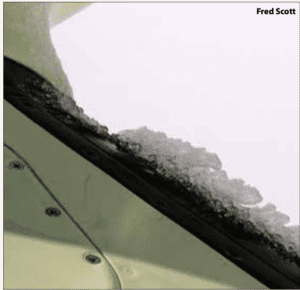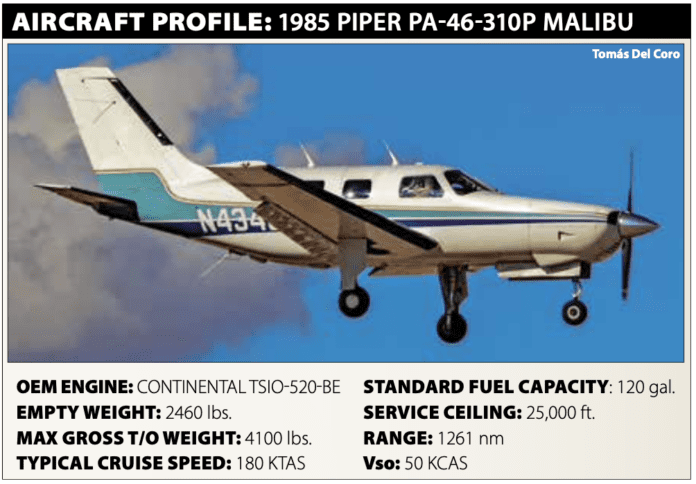One of the truisms in aviation is that there’s weather no airplane should tackle. The addendum is that if you want to go shoot approaches in your Cessna 150 through relatively benign IMC, there’s probably not that much that can go wrong. But even a 747 likely won’t tolerate extreme icing. And we all (should) know that a strong microburst at the wrong time and place can bring down anything.
The moral here is that there always will be conditions we should avoid or wait out for improvement before launching to visit the grandparents at Thanksgiving. Some of that depends on how our chosen airplane is equipped. Some of it doesn’t. But all of it hinges on honestly assessing our own readiness for the challenge. It’s one thing to critically examine our airplane’s capabilities and shortcomings but it’s another to point a critical eye at ourselves.
An easily understood, real-world example is the owner of a high-performance single who just doesn’t have the time to earn the instrument rating but somehow always seems to find enough VMC to complete the mission on-schedule. He (and it’s always a he) obviously is relying on sophisticated avionics and the autopilot to keep the dirty side down and compensate for his lack of skills and training.
Yes, that’s an extreme, but there’s someone right now at your local airport who’s planning something similar. Less extreme variants of such a scheme are common, too: stretching fuel, overloading the airplane, skimping on maintenance and flying with a known medical deficiency are all examples of how we can be drawn into situations exceeding our or the airplane’s capabilities.
It’s bad enough when we stretch the airplane’s capabilities or our own. Here’s an example of what can happen when we stretch them both.
BACKGROUND
On April 23, 2021, at about 1701 Central time, a Piper PA-46-310P Malibu was destroyed when it broke up in flight near Danville, Arkansas. The commercial pilot (male, 28) and three passengers sustained fatal injuries. Instrument conditions prevailed.
The airplane departed Muskogee, Oklahoma, at 1622, with Williston, Florida, as its destination. At about 1651, the pilot reported climbing through 16,000 feet msl on the way to the flight-planned altitude of FL230. As the airplane climbed through 18,600 feet msl, its groundspeed began to gradually decrease from 171 knots. By about 1658, after reaching 20,200 feet, the airplane had slowed to 145 knots groundspeed and began to descend on a southeasterly heading. No further radio communications were received from the pilot, who did not respond to repeated calls from ATC. The flight path then became erratic. The last radar return was about 1000 feet south of the accident site.

According to the NTSB’s Safety Alert SA-014, Activate Leading-Edge Deice Boots As Soon as Airplane Enters Icing Conditions, pilots of deicing-boot equipped airplanes should:
• Activate them as soon as icing is encountered, unless the AFM or POH specifically directs pilots not to.
• If the AFM/POH specifies to wait for an accumulation of ice before activating the deice boots, maintain extremely careful vigilance of airspeed and any unusual handling qualities.
• While icing conditions exist, continue to manually cycle the deice system unless it has a provision for continuous operation.
• Turn off or limit autopilot use in order to better “feel” changes in the airplane’s handling qualities.
• Be aware that some aircraft manufacturers maintain that waiting for the accumulation of ice is still the most effective means of shedding ice.
INVESTIGATION
Most of the airplane came to rest in densely forested terrain at an elevation of about 930 feet. The outboard portion of the right wing, right aileron, right horizontal stabilizer and right elevator were not in the vicinity of the main wreckage and have not been found, despite multiple attempts by the NTSB. The recovered airframe components and engine did not display evidence of pre-existing mechanical malfunctions or anomalies precluding normal operation.
Based on the weight of the removed cargo and the passengers, plus flight-planned fuel, the airplane would have been about 361 lbs—almost nine percent—over its maximum gross takeoff weight when departing Muskogee.
The en route weather forecasts were rife with the word “icing.” The current icing product (CIP) for 1700 CDT indicated a 40-to-60 percent probability of icing at 14,000, 16,000 and 18,000 feet msl above the accident site, with pockets of “moderate to heavy” icing along the flight track leading to the accident location. There also was an unknown probability of supercooled large droplets (SLD) above 12,000 feet msl at the accident site. The one-hour forecast icing product (FIP) valid for 1700 CDT indicated a 30-to-50 percent probability of moderate to heavy icing between 14,000 to 18,000 feet msl over the accident area.
The accident pilot obtained weather information from Leidos Flight Service at about 1554 and had additional discussions through about 1620. Additionally, a search of archived ForeFlight information indicates the accident pilot requested and received related information at 1525.
A review of the pilot’s FAA airman certification file revealed multiple notices of disapproval issued when the pilot failed various practical tests for certificates or ratings. The first notice was issued March 20, 2015, in conjunction with the pilot’s application for a private pilot certificate. The second disapproval notice was issued December 1, 2018, when the pilot failed his initial flight instructor checkride. Two additional disapprovals were associated with the pilot’s application to add an instrument rating to his flight instructor certificate. These occurred on October 20, 2019, and July 10, 2020.
PROBABLE CAUSE
The NTSB determined the probable cause(s) of this accident to include: “The pilot’s improper decision to continue flight in an area of moderate-to-heavy icing conditions, which resulted in exceedance of the airplane’s anti-icing system capabilities, a degradation of aircraft performance, and subsequent aerodynamic stall.”
There’s certainly a lot going on here, and any one of the identified deficiencies—overloading, bad weather, a history of poor airmanship—by itself might be enough to bring down a well-equipped airplane. A piston single, even if it’s turbocharged, pressurized and equipped for known icing our first choice for such an airplane.
From the record, we don’t know how the pilot operated the airplane’s anti-icing system, although the NTSB spent time reminding readers that the old-style method of waiting for ice to build on the wings before cracking it off with the inflatable boots no longer is the preferred method. (See the sidebar on the opposite page for more details.) For all we know, he may never have activated the boots. Or he maybe did exactly as the NTSB recommends throughout the flight. We just don’t know, We also don’t know how important the cargo or the mission itself was.
But we do know that waiting for better weather or going around it, even if it made an en route fuel stop mandatory, would have been the wiser choice.




